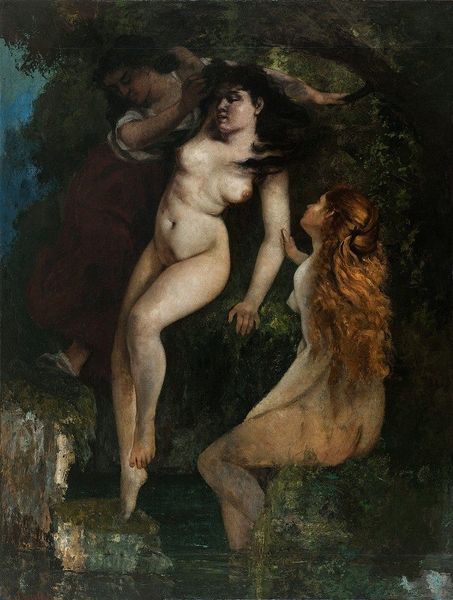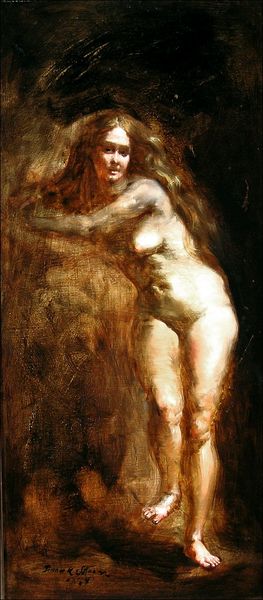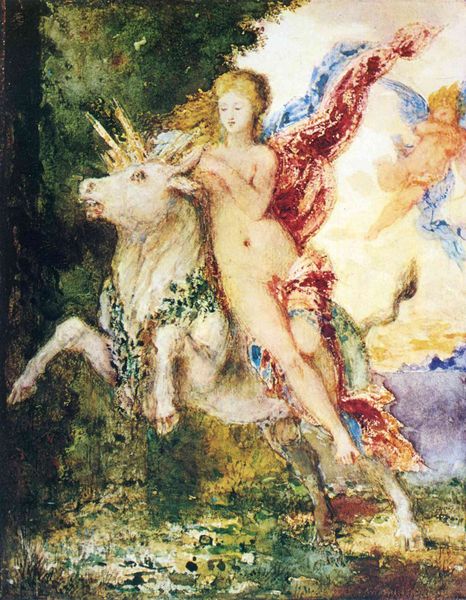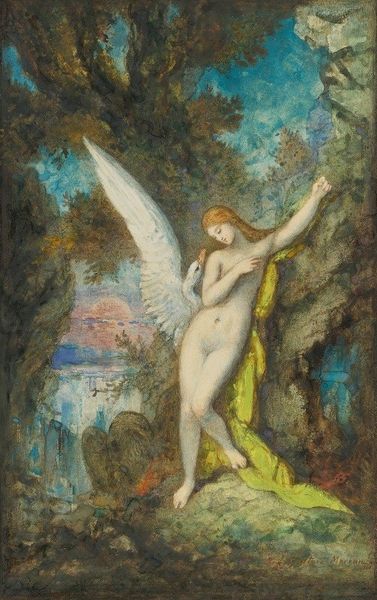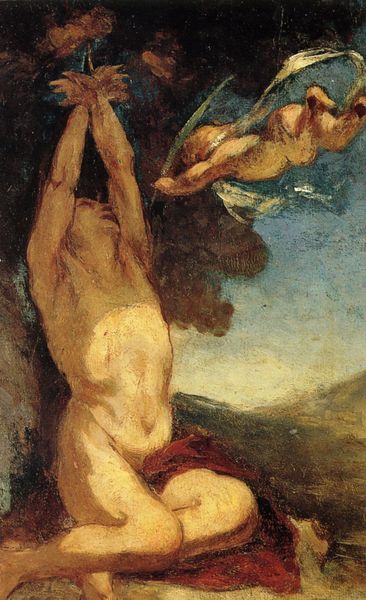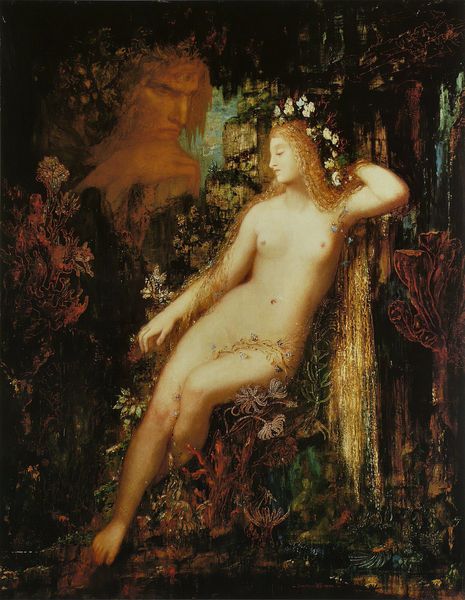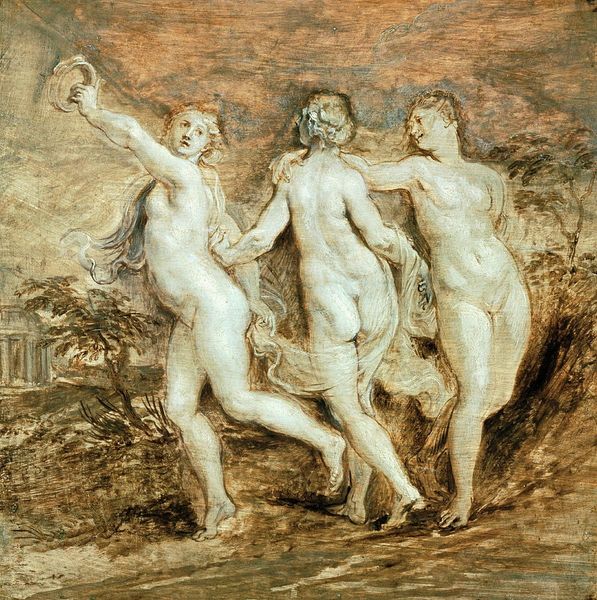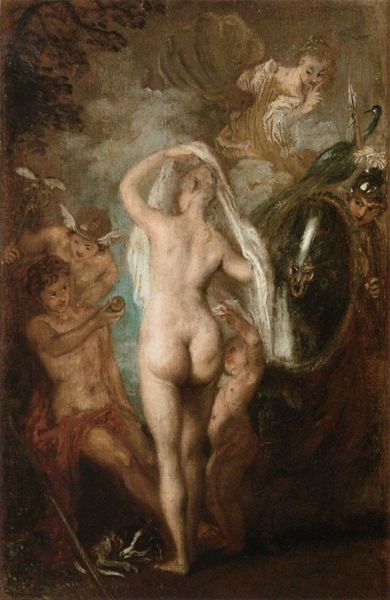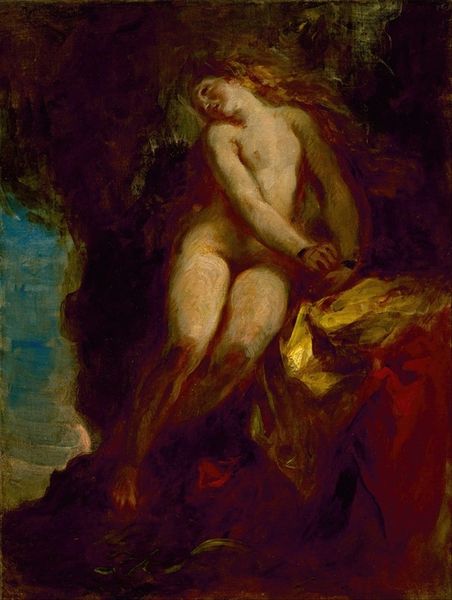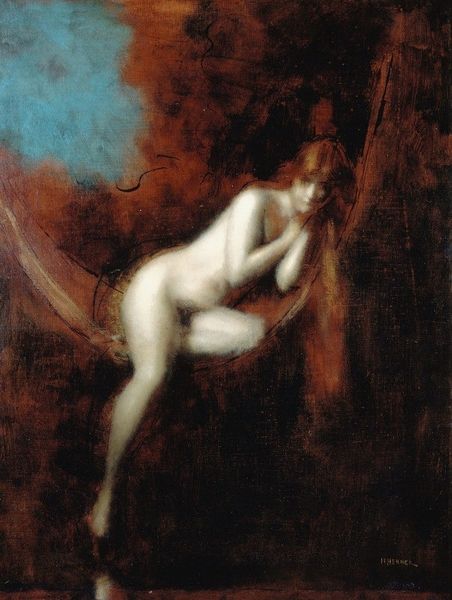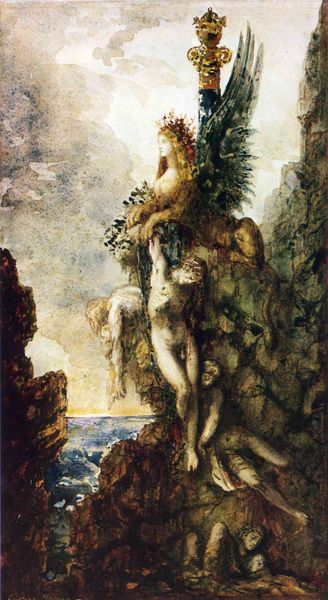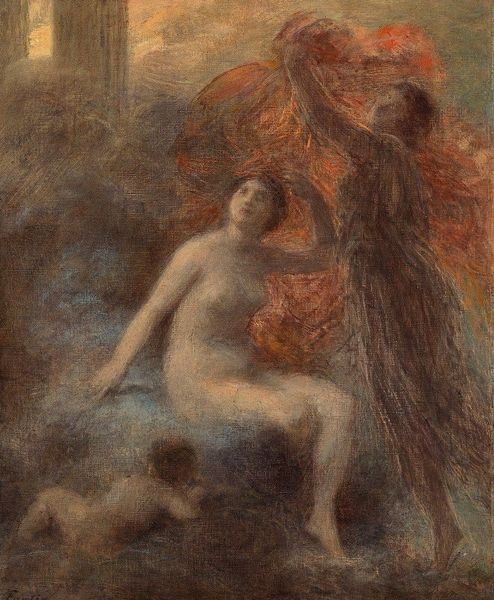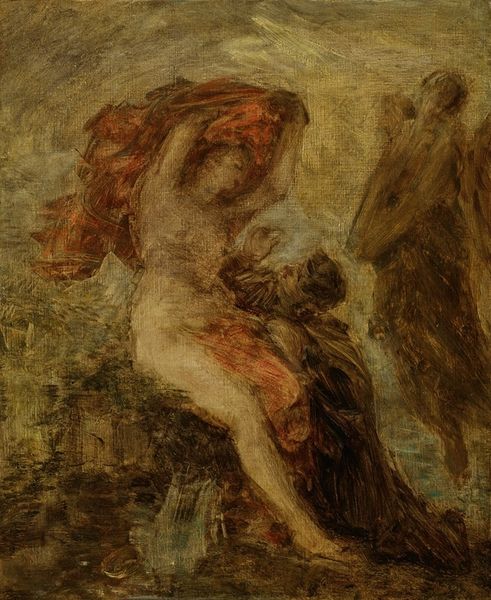
Dimensions: 21 x 34 cm
Copyright: Public domain
Editor: So this is Gustave Moreau's "Leda," painted in 1880, currently at the Musée National Gustave Moreau. It's an oil painting, and I'm immediately struck by its ethereal quality and how the light seems to emanate from the figure of Leda herself. What's your take on it? How do you interpret this work, especially considering the mythology behind it? Curator: The power of this painting resides less in the precise rendition of the myth itself, and more in how it uses that narrative to explore themes prevalent at the time. Consider the late 19th-century's obsession with classical themes, and how Moreau presents them here. Notice the heavy symbolism and the somewhat unsettling mood, reflective of the shifting societal views of myth, power, and female agency. How do you think the painting's presentation of female form, both idealized and vulnerable, would have been received at the time? Editor: I can see how it would have been viewed as a commentary on the female form. The historical context is useful, and maybe it reflects some of the anxiety around female empowerment. But is there a specific public role for art you can observe here? Curator: Absolutely. Moreau's work can be seen as participating in a larger discourse about the role of mythology in constructing national identity and moral values. The art world at this time heavily impacted political dialogue and power, making "Leda" part of this world, whether he intended it or not. What is your final takeaway here? Editor: I guess my understanding has changed by thinking of the artwork not only as depicting Leda's myth but also commenting on contemporary views about myth, morality and women’s role, all set in a shifting socio-political landscape. Curator: Precisely, It’s in understanding this social conversation that a piece like "Leda" truly comes alive, allowing us to explore those late 19th-century sensibilities.
Comments
No comments
Be the first to comment and join the conversation on the ultimate creative platform.
